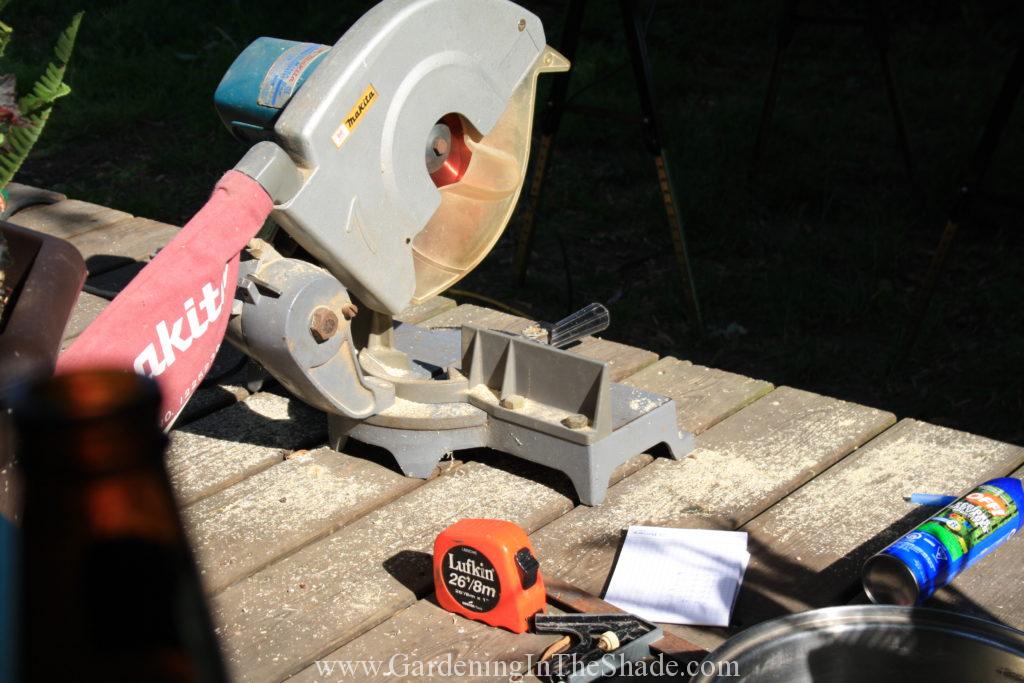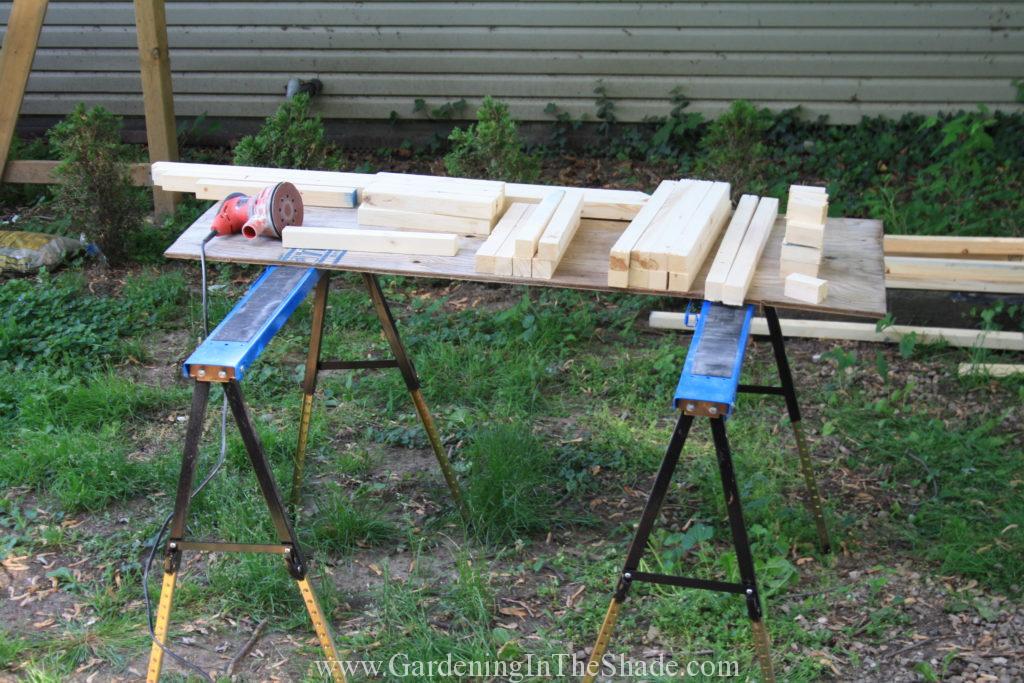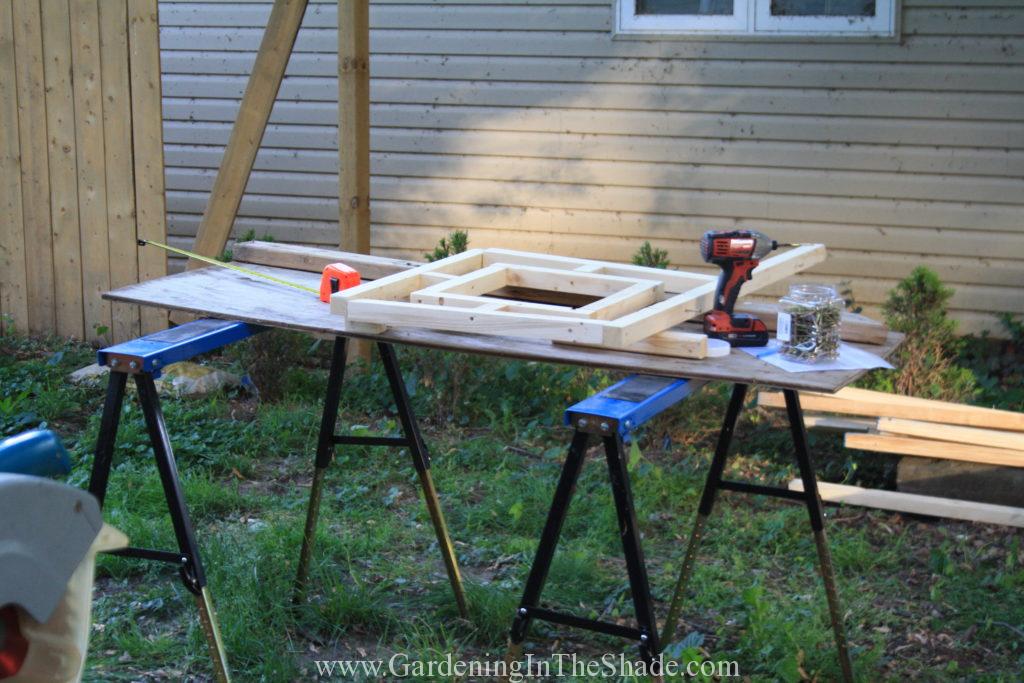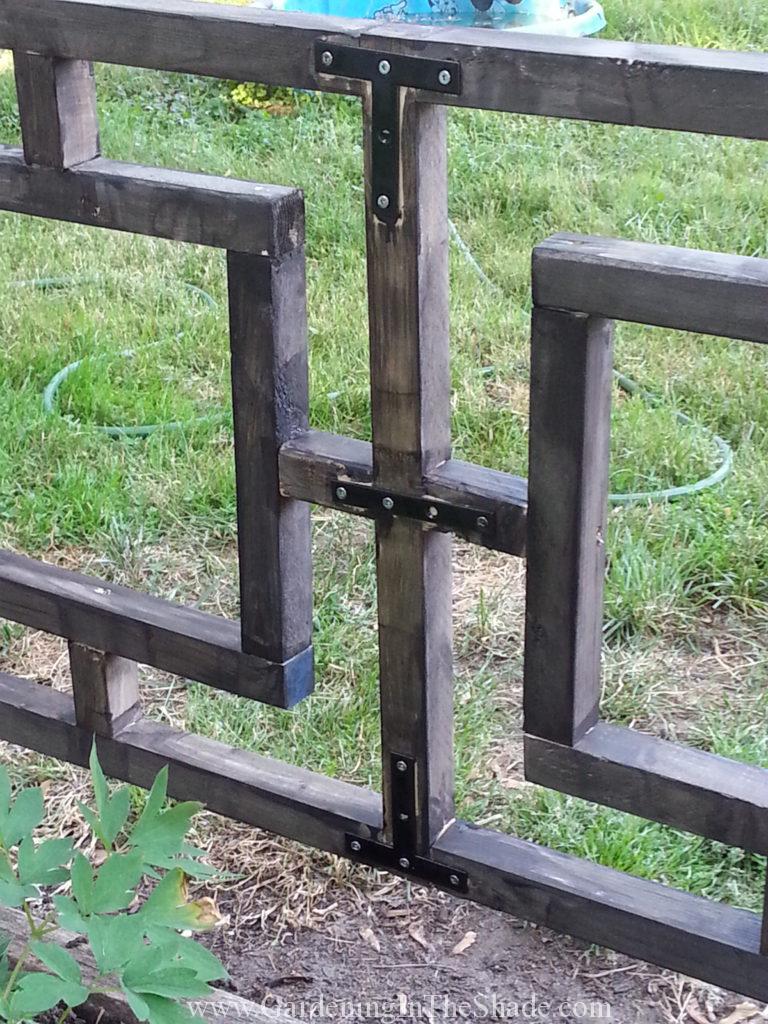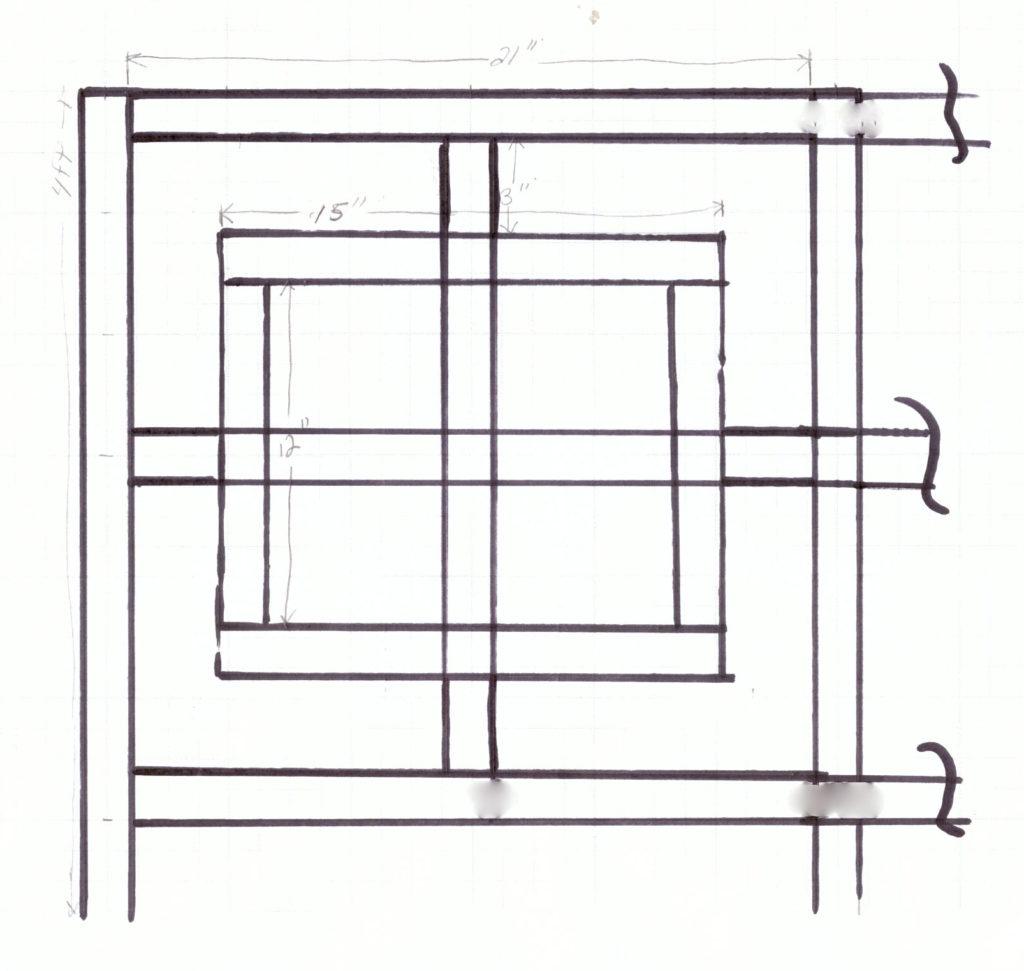
Leather Moroccan Poufs are all over the home decorating sites but they come with a hefty price tag, they’re listed at $395 US on one site, more than my cheap little heart can handle.
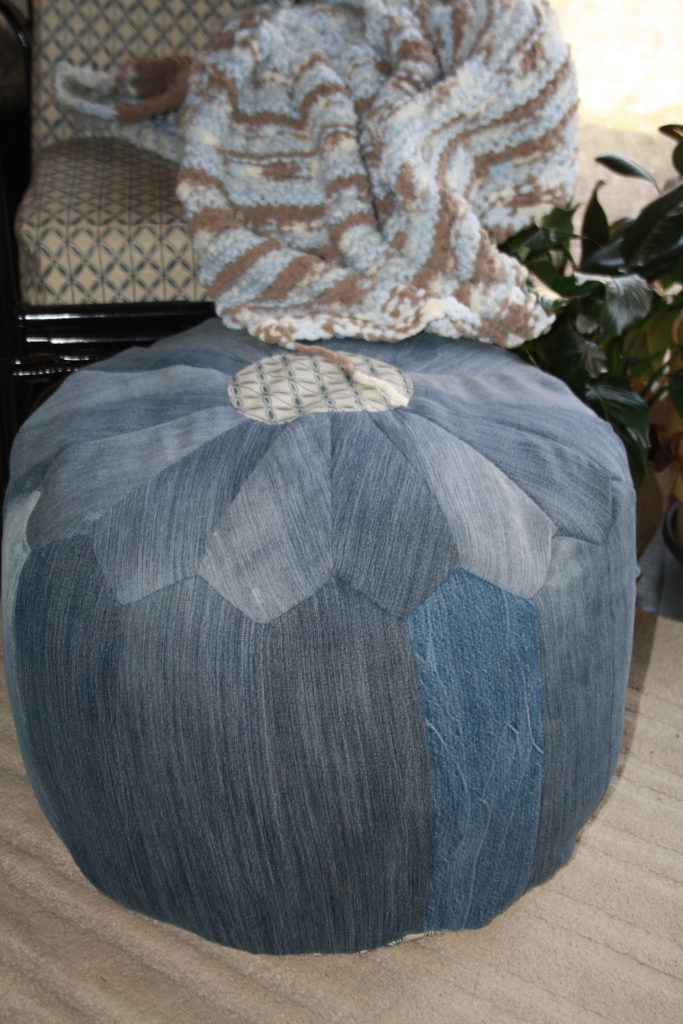
So I made my own from old jeans. It’s neither an easy project nor a quick one. Insets, where you fit the triangles together, are a bear and there are 32 of them in this pouf. But if you don’t mind a sewing challenge and are looking for pouf, this is how I made mine.
For this project, you’ll need the following:
- Old jeans (I used 4 pairs) or fabric in enough yardage.
- Matching thread and the usual sewing supplies including a seam ripper.
- A nylon zipper, 22″ or longer. I used a duvet zipper and just cut the extra off.
- Stuffing of some sort, you can use old clothes, pillows, or you can buy the bean bag pellets.
- Patience.
- You can use this pattern – Moroccan Pouf Pattern – or draft your own on freezer paper.
Cut out your pieces
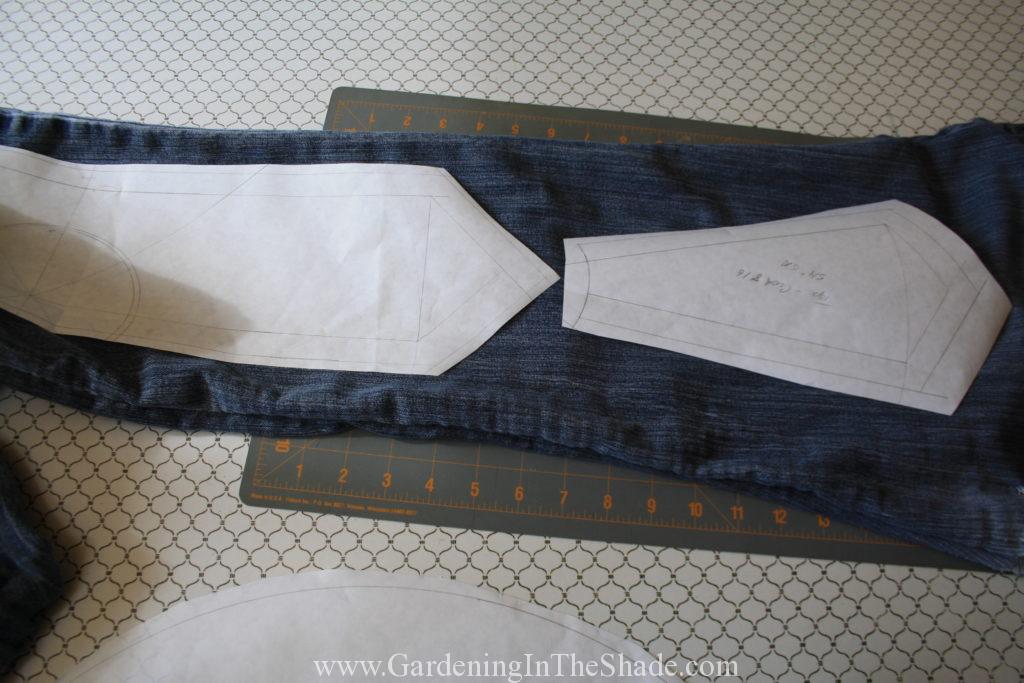
Take each pant leg and smooth it out, with a rotary cutter you can cut the front and back of the leg at the same time. I found I could easily fit one side piece and one or two of the top pieces on each leg. Times two, because front and back. So four pants, eight legs, 16 tops and 16 sides. Done.
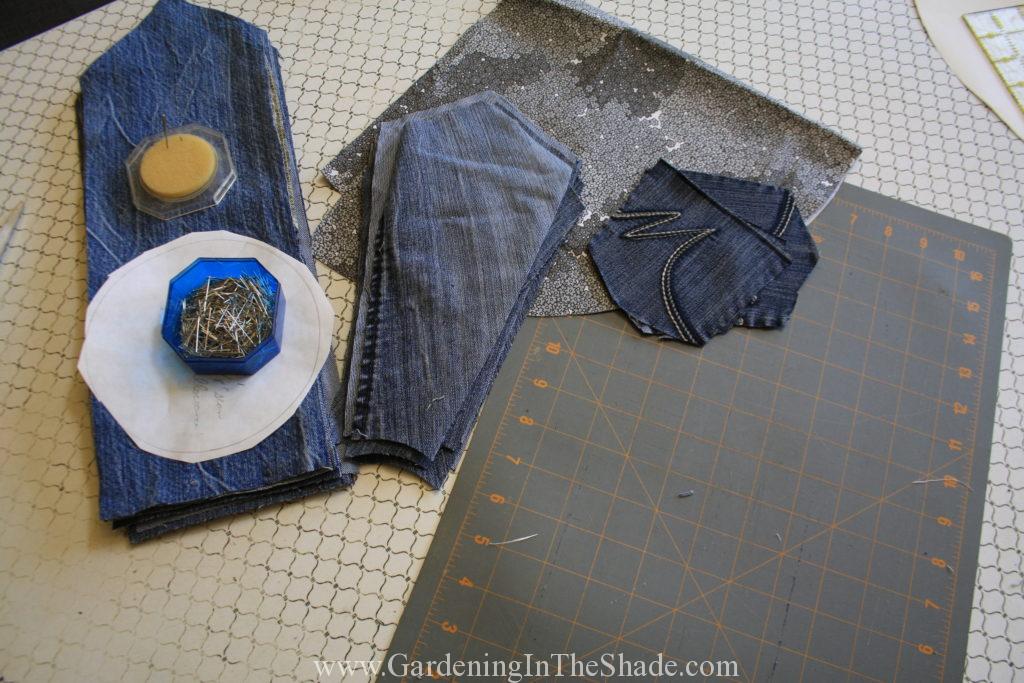
The bottom is a bit trickier, by this time I was out of usable denim so I dipped into my stash. I thought I would be clever and piece the pockets together for the center of the top – you’ll see what happened there later.
Assembling the top:
Denim has some quirks, worn denim even more. When sewing your pieces together, sew all of your seams in the same direction so it doesn’t twist. Since the trickiest part will be assembling all of those points and valleys of your outer edge the valleys and points of the sides, stitch from outer edge toward the center.
When it came time for me to attach my top to my sides, I wound up opening part of the seam, so if you prefer you can start your stitching 1/2″ from what will be the outer edge of your top.
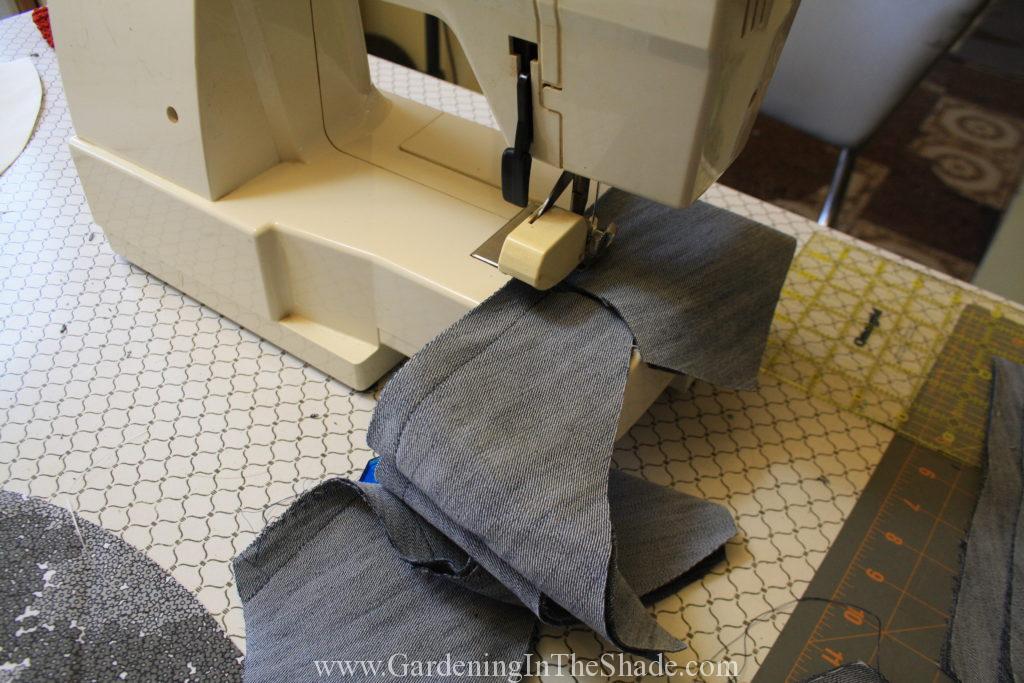
The fastest way to do this is to make eight pairs, sew them, press them open and then make four pairs and so on until it’s done.
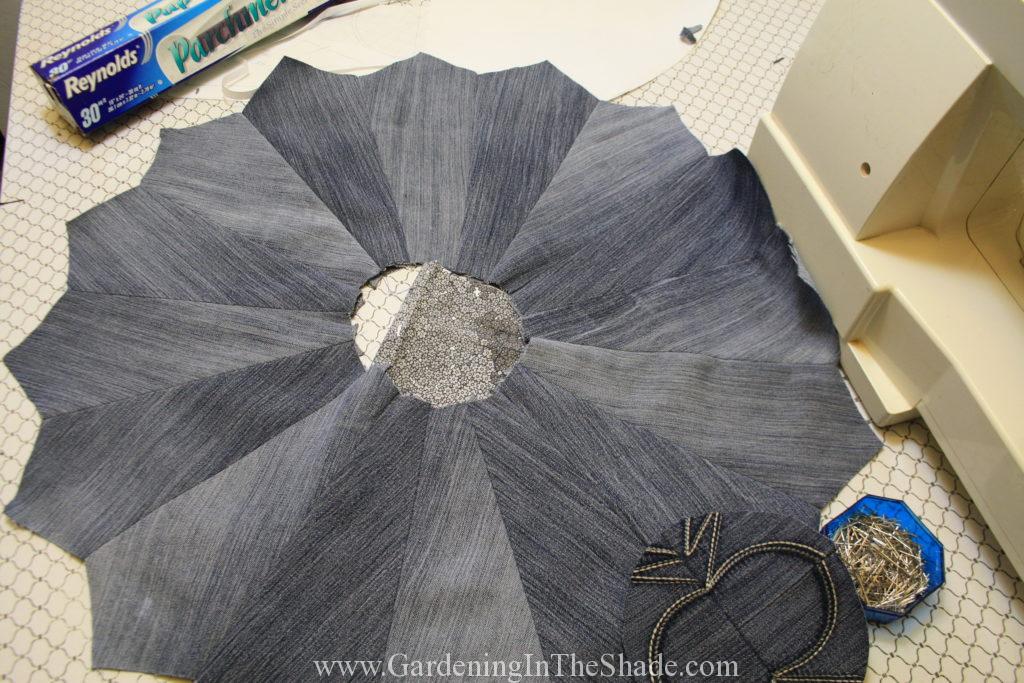
See how I sewed the pockets together and matched up the embroidery? Fancy right?
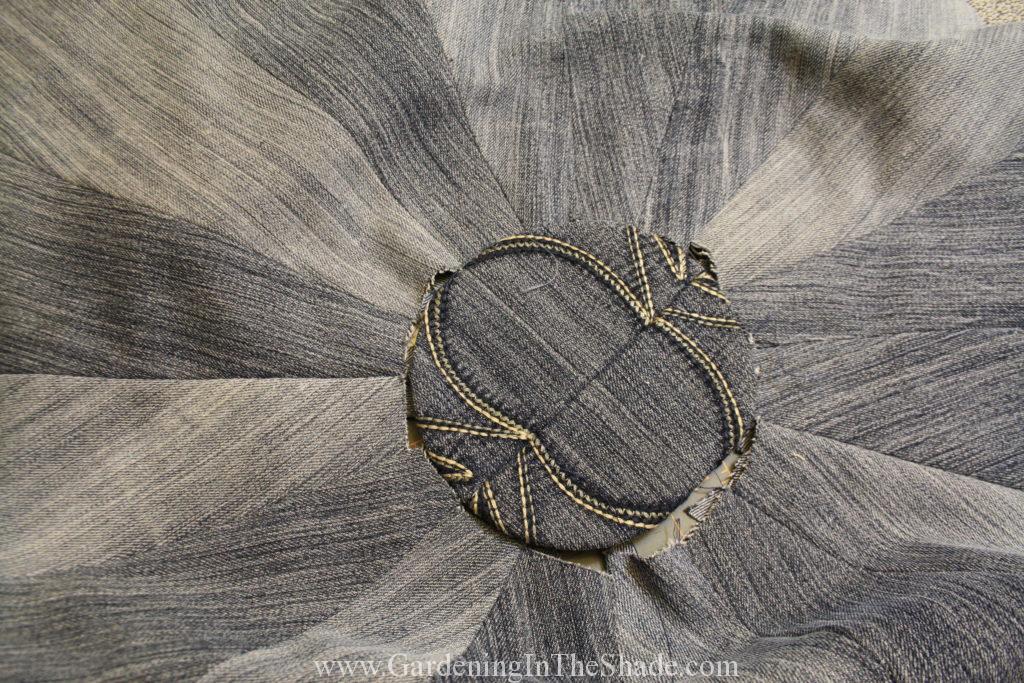
It would have been great if it was big enough to use. With 16 seams, even the tiniest inaccuracy in your sewing adds up. I had to cut a larger circle for my center.
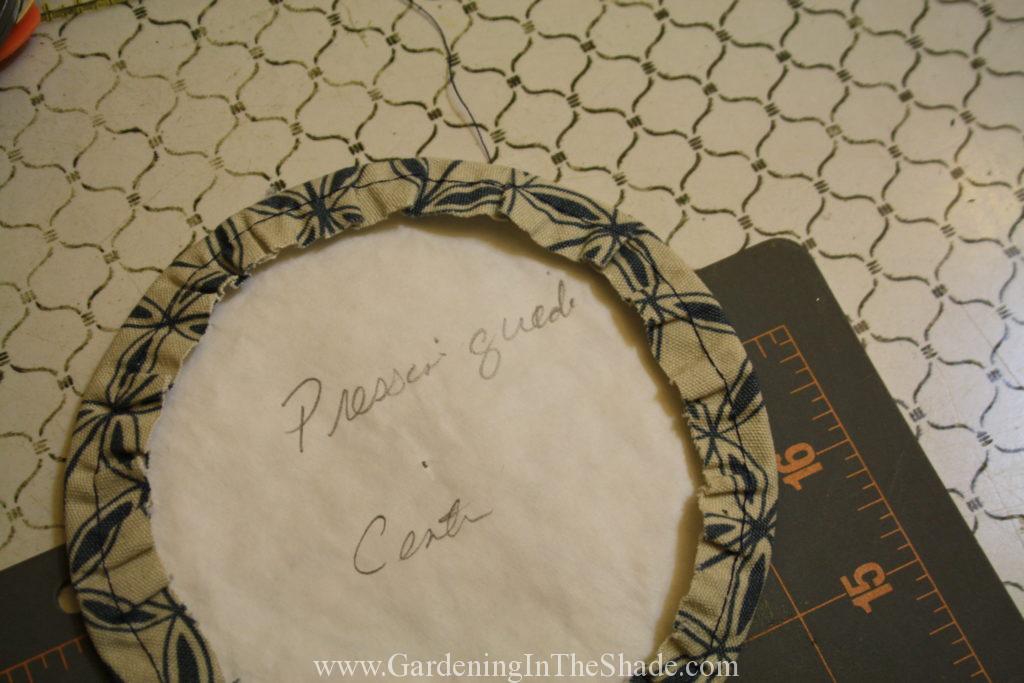
So for your center, using a long stitch baste around the outside edge. Pull up your bobbin thread to gather it a bit so it will be easier to turn under. If you trim the seam allowance off of your pattern piece, you can use it as a pressing template.
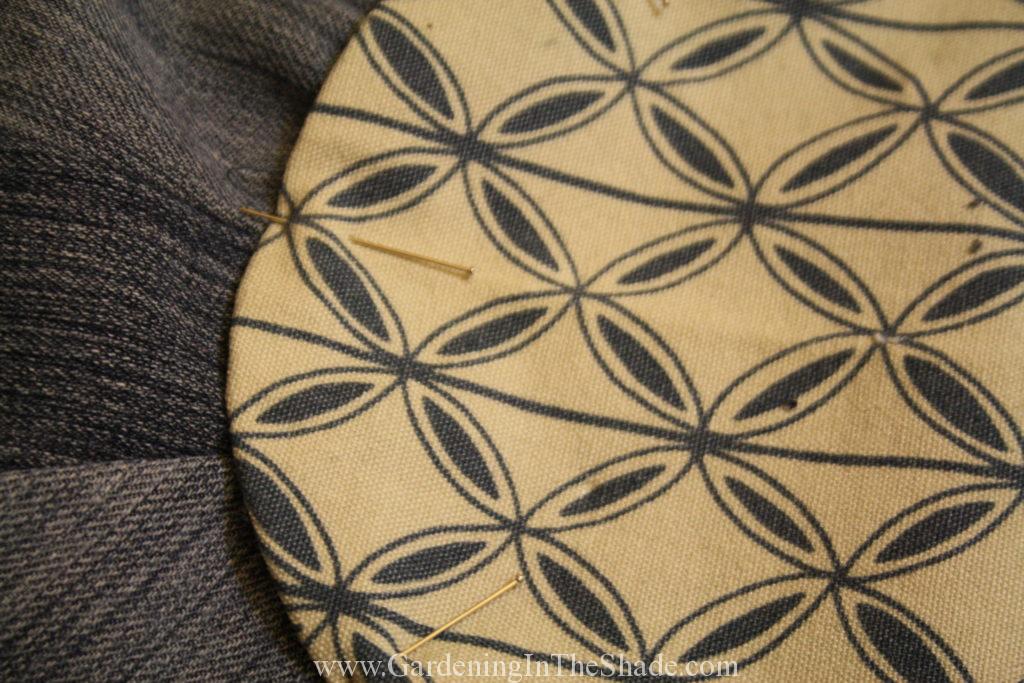
Pin it in place (mark your quarters and make sure it all lines up).
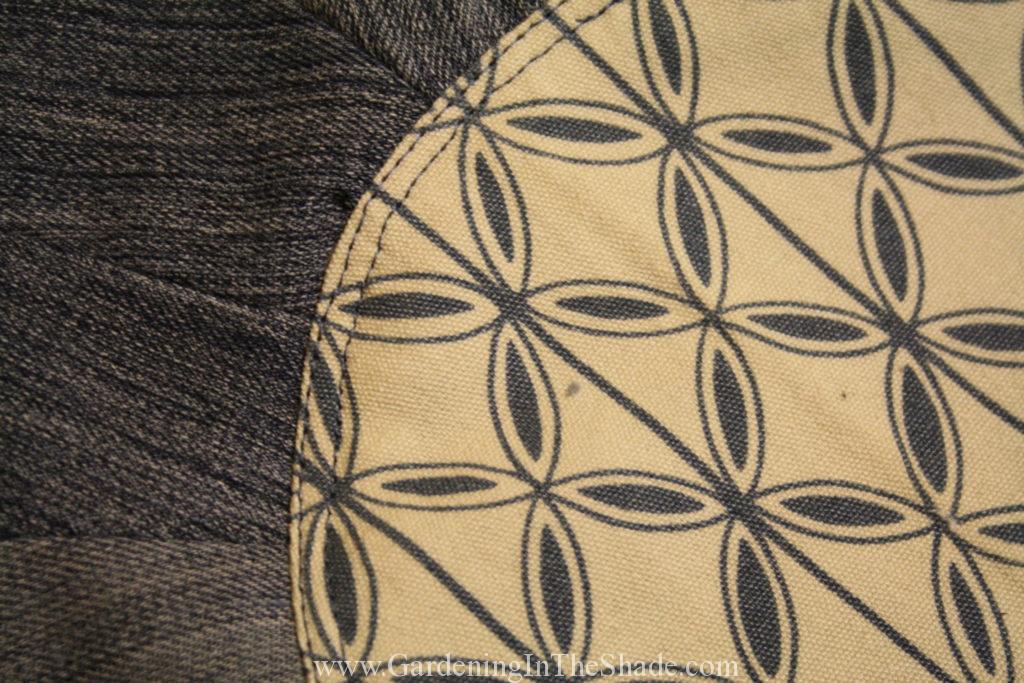
Sew around once 1/4″ or so from the edge, and then again very close to the edge.
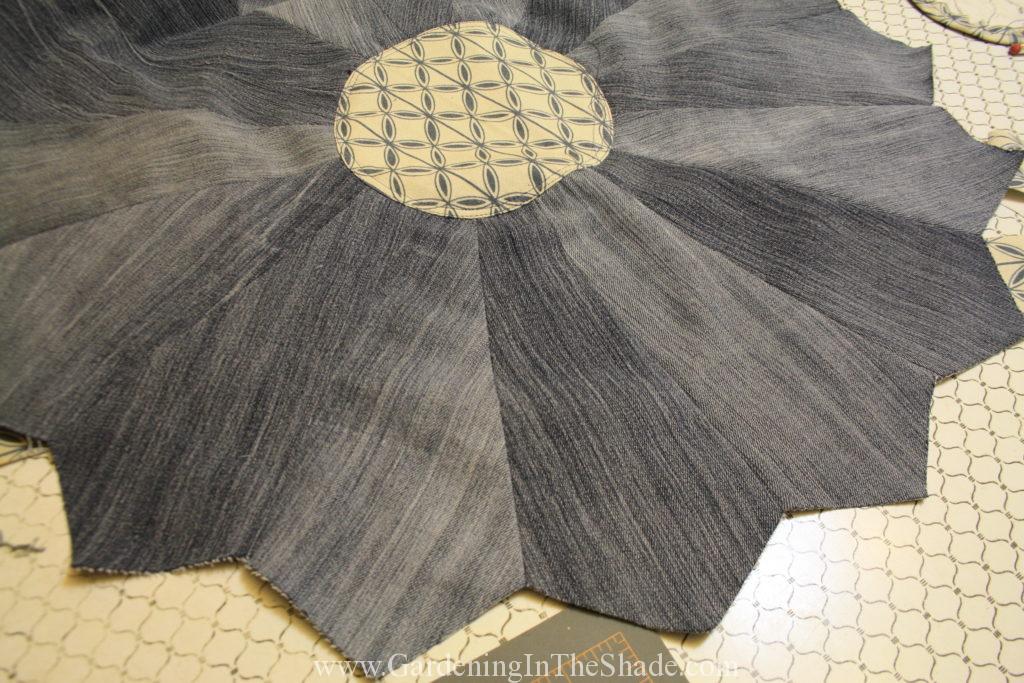
That’s the top assembled. Real Moroccan Poufs usually have embroidery on the top so you could embroider or stencil yours if you want to. I really think a stenciled pattern would look nice. Plus if you invest that much more time in it, you’ll be less likely to toss it in the trash once you start attaching the top to the sides.
Assemble the sides:
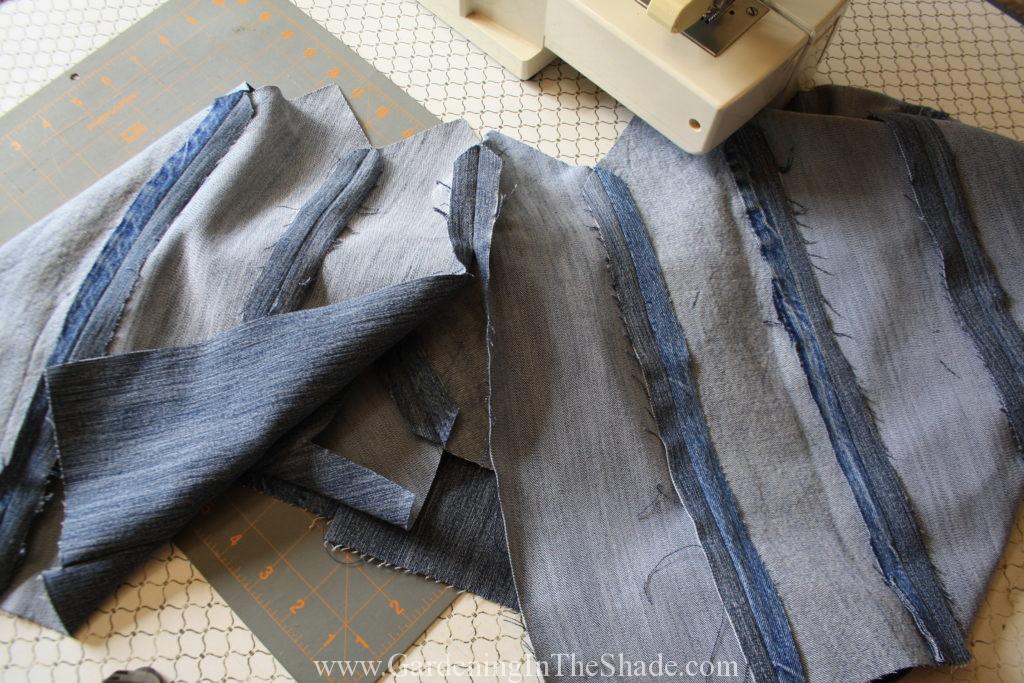
Next, you’ll assemble the sides of your Moroccan pouf in the same way as the top. Again sew together from the pointy end down and all of your seams in the same direction. For the last two seams, I only sewed the top couple of inches to give myself more room to maneuver, but I don’t think it was necessary. Again, I later opened up the seam, so you can start stitching from 1/2″ down if you wish.
Assembling your Moroccan Pouf:
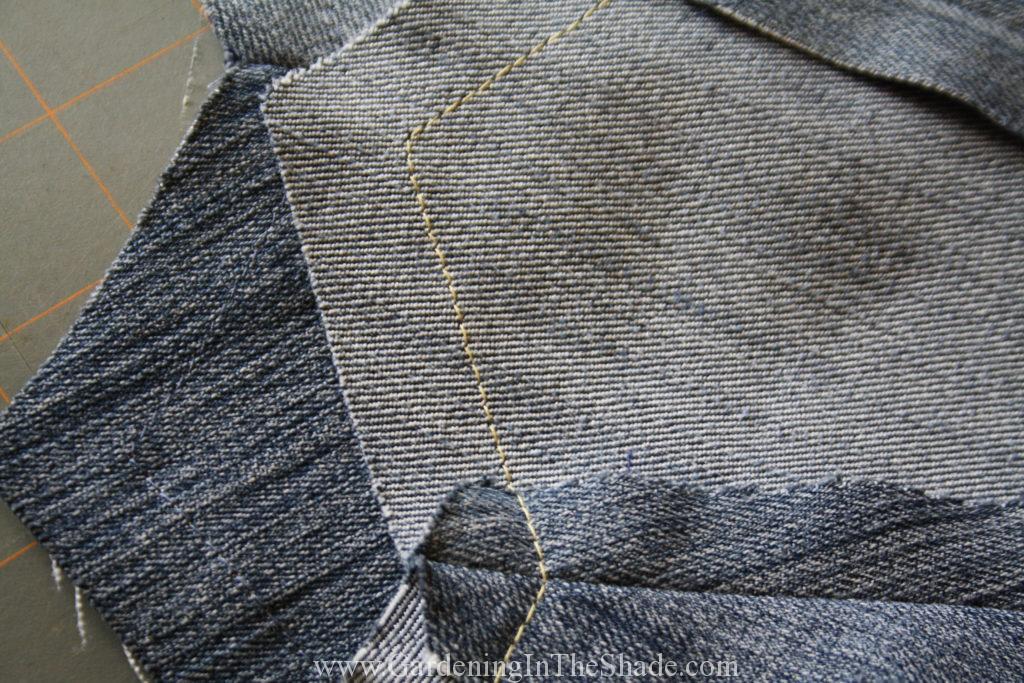
Now replace your bobbin with contrasting thread and baste 5/8″ from the outer edge of your top and the upper edge of your side, lifting your presser foot with the needle down at each turn. Leave your matching thread in the top and sew wrong side down – I know it’s obvious, but so is right sides together and I can’t tell you how many times I’ve gotten that wrong.
This gives you a seam line for matching the points of the outies to the valley of the innies. I found it also stabilizes your edges and if you’re opening your seams up like I did, helps keep everything together. You will also see where you need to turn your points to have the proper seam allowance on the other side. Mark this point on your throat plate, it will help you later.
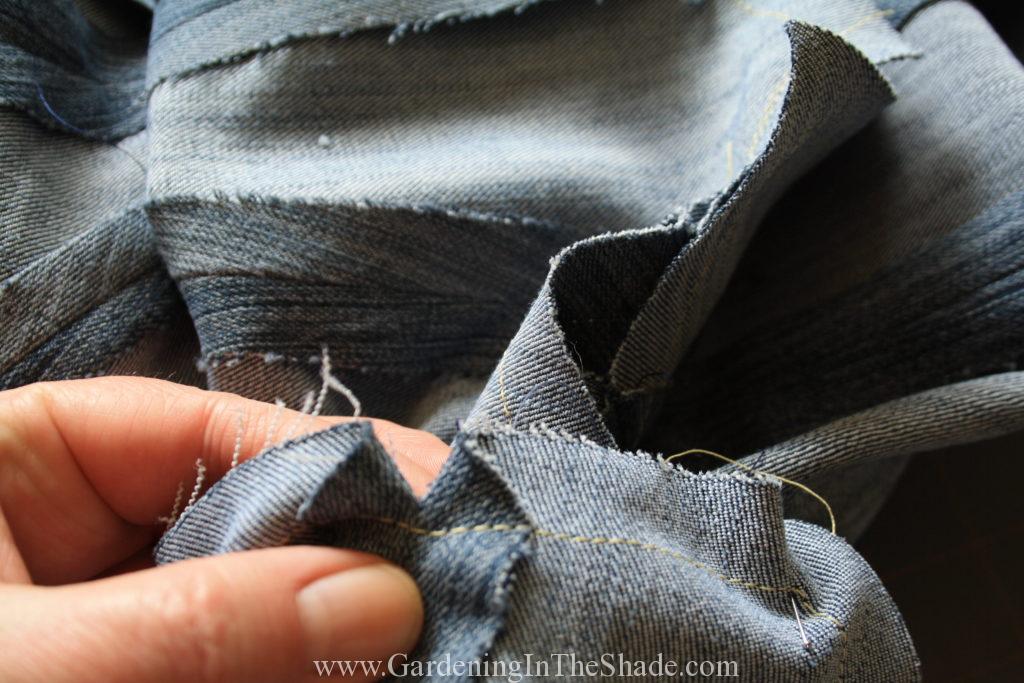
This is where I opened my seams to the basted line. If you left the 1/2″ unsewn, you can skip the quality time with your seam ripper. Either way, you will need the open seam to have enough ease to match the points to the valleys.
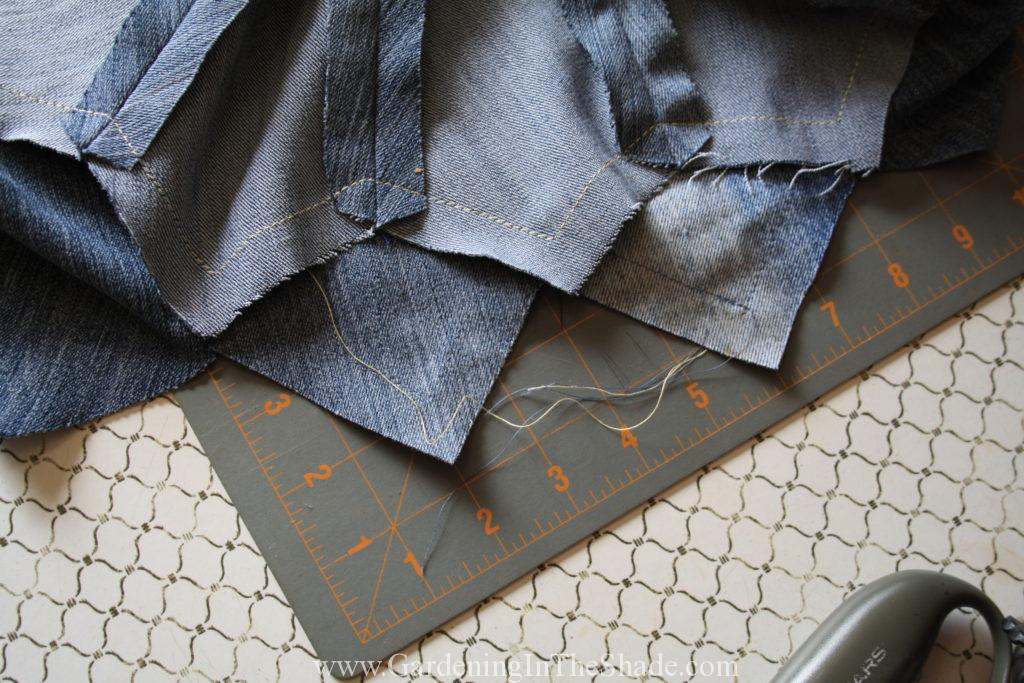
You have to match the points of your top to the valleys of your sides, and the points of your sides to the valleys of your top. Innies to outies, outies to innies.
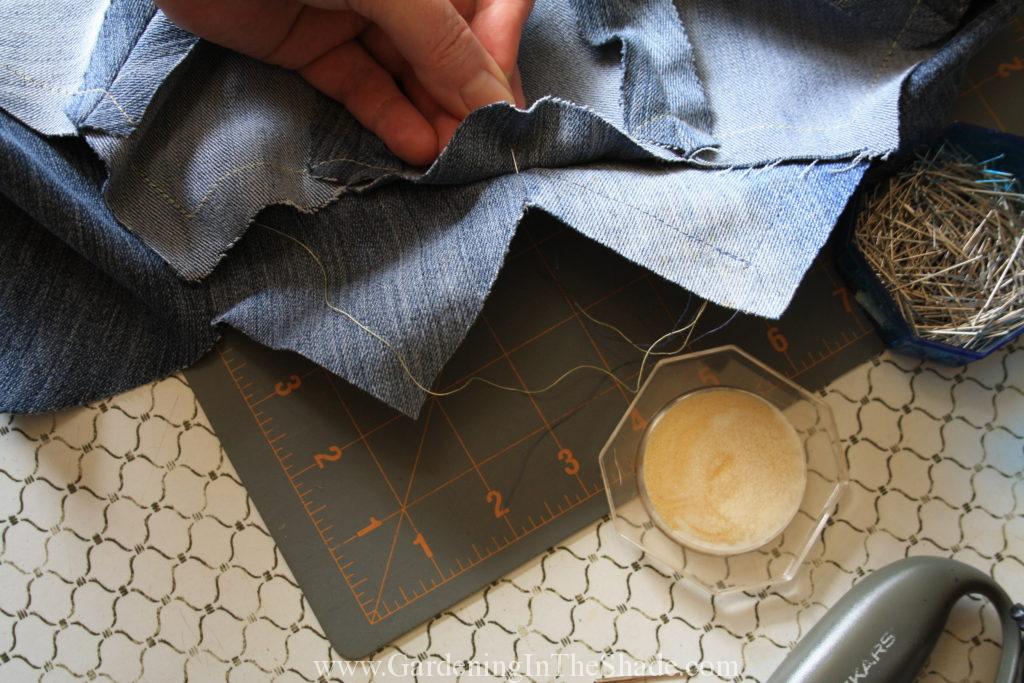
Use your handy stitch line to match points to valleys. Below, you can see what it looks like with every single point pinned to every single valley. Which I actually found harder to work with when I was sewing, so I would just pin every other point.
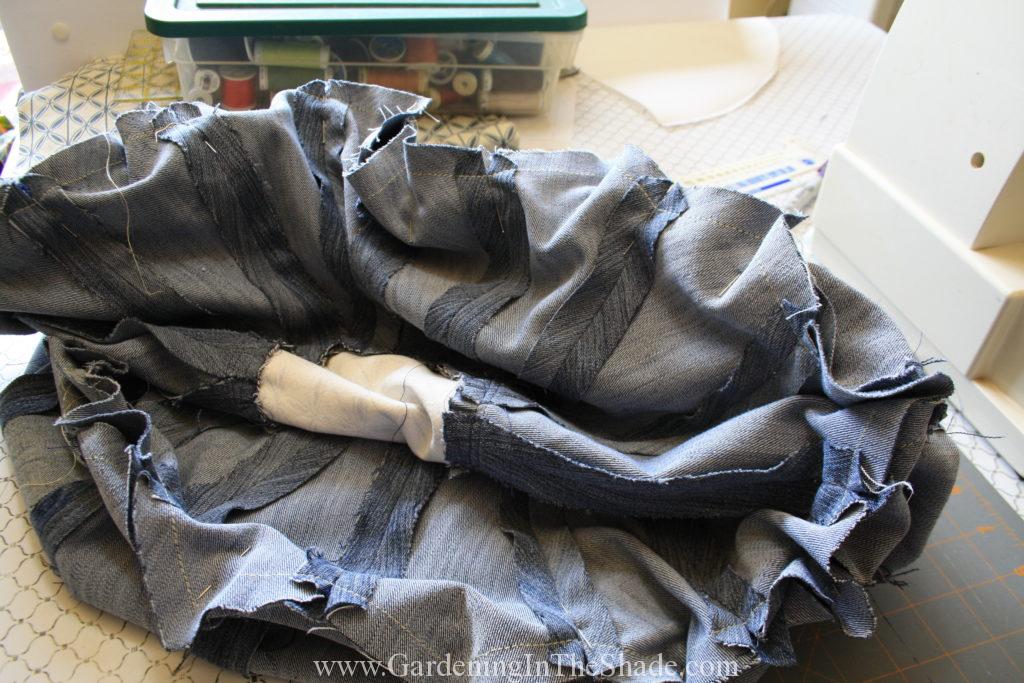
Replace your bobbin with matching thread and make sure it’s full. This is NOT the seam you want to run out of bobbin thread on. Take a deep breath and find your zen, because this is where you need to be very patient. It’s going to look absolutely insane under your presser foot!
I started on a straight edge and sewed towards my corner. As soon as I hit the point, I stopped with the needle down. Then I lifted the presser foot and turned the fabric. Thirty-two times I was convinced it wouldn’t work, and thirty-two times, I was able to smooth it all out, line it up, and sew to the next point. So I’m very confident you can do it too.
Once you’ve made it all the way around, check for any kinks or puckers. If you have one you don’t have to rip out the entire seam. Just remove the stitching far enough to each side that you can smooth it out and then sew it again. The zipper is going to seem easy now isn’t it?
Insert the zipper and attach the bottom:
With right sides together, sew 2″ together at each side. Baste the rest of the seam and press open. Lay your zipper on the seam, sew each side.
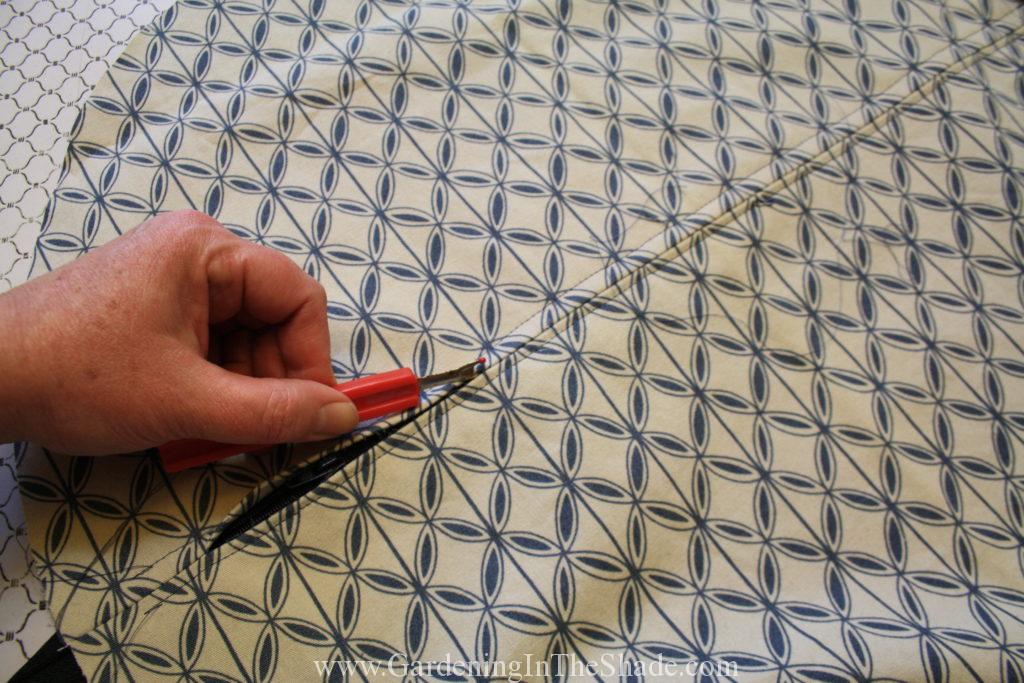
Run your seam ripper through the basting and open your zipper.
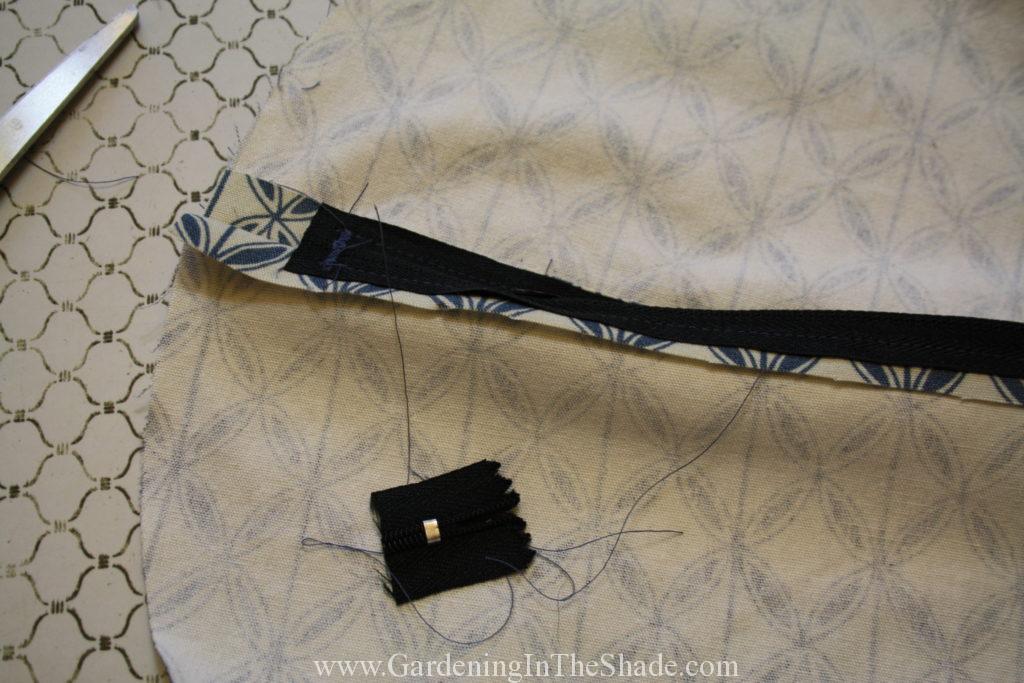
With the zipper open, zig-zag over each end of the zipper and cut off the excess. Make sure your zipper is open before you sew over the ends, or it won’t work as a zipper anymore.
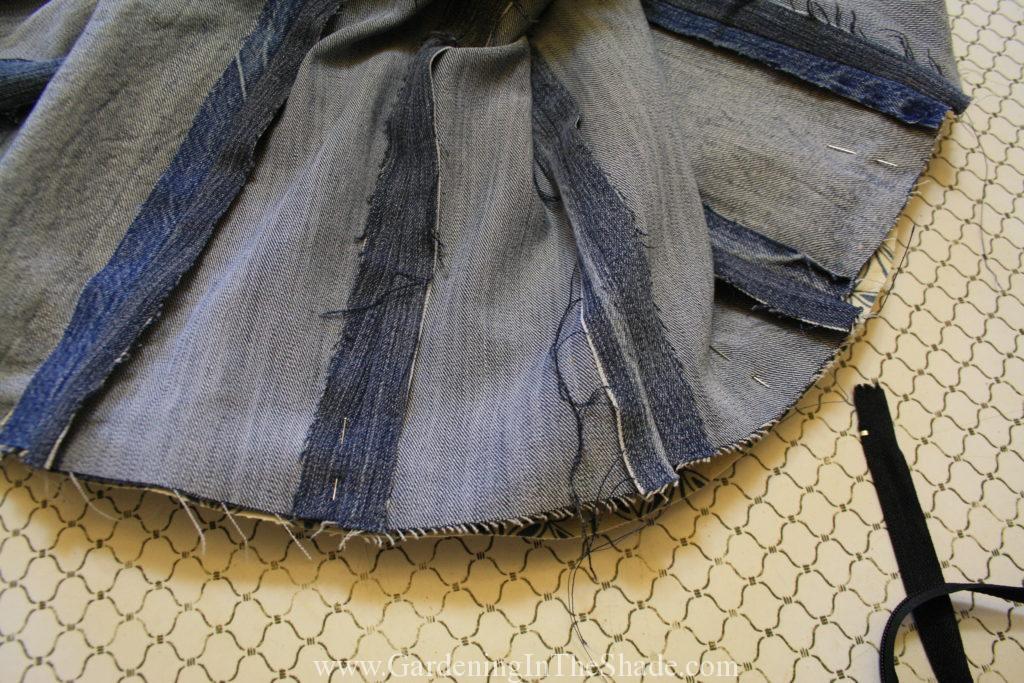
Leaving the zipper open just enough to get your hand through, pin and sew the bottom to the sides. Sewing this seam will be ridiculously easy after attaching the top! Open your zipper, turn it all right side out and stuff it. I used leftover styrofoam beans and an old pillow.
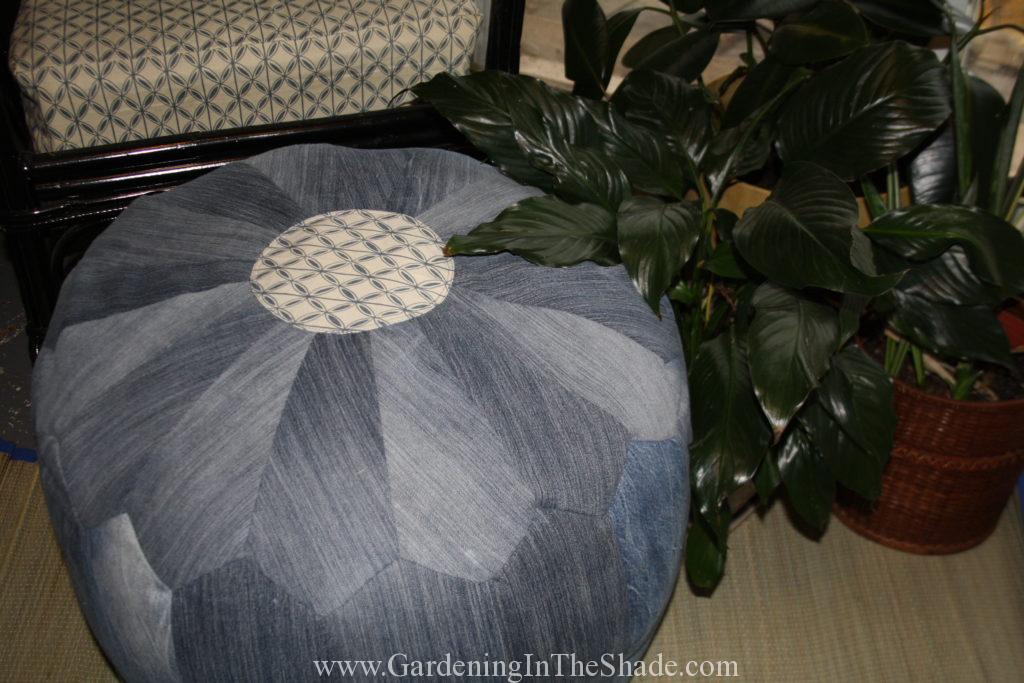
Congrats! You’ve now got a Moroccan pouf for next to nothing!
If you enjoyed this post, don’t forget to share it with your friends! For more just like it, follow me on Pinterest, Facebook and Twitter or sign up for regular updates by email.
If you have ever thought about starting a garden or craft blog of your own see how easy it is >>here<<.

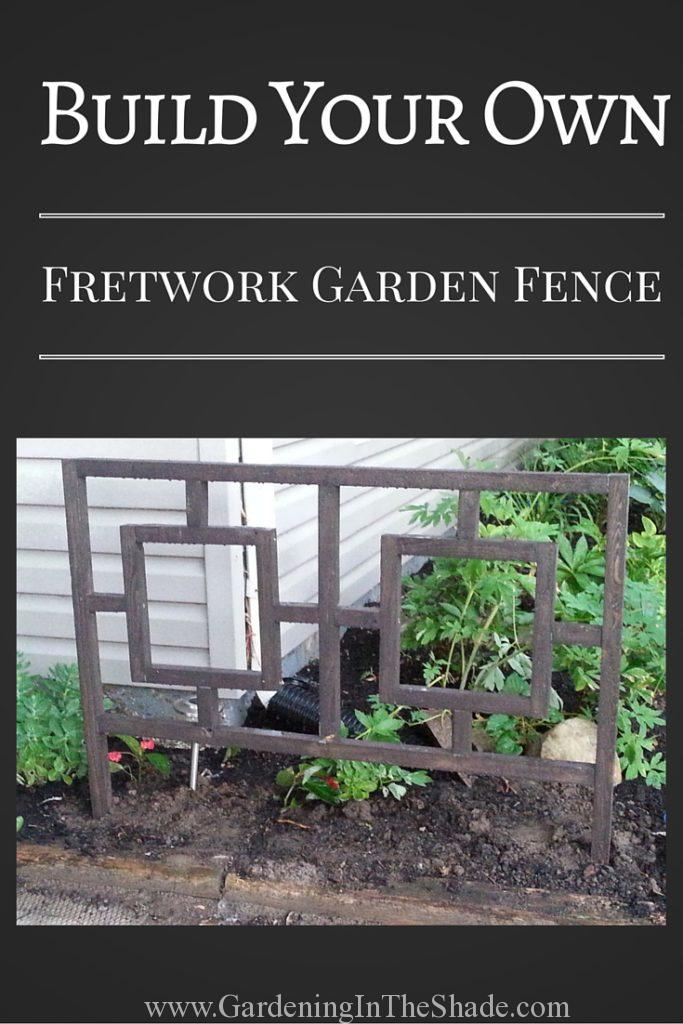
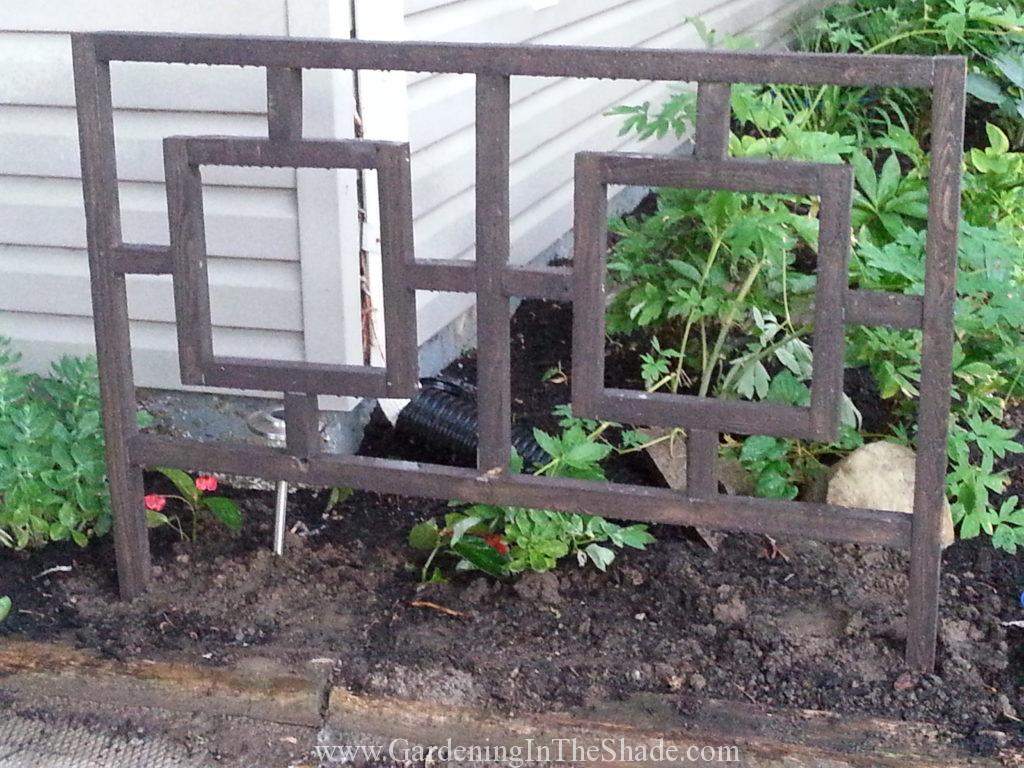
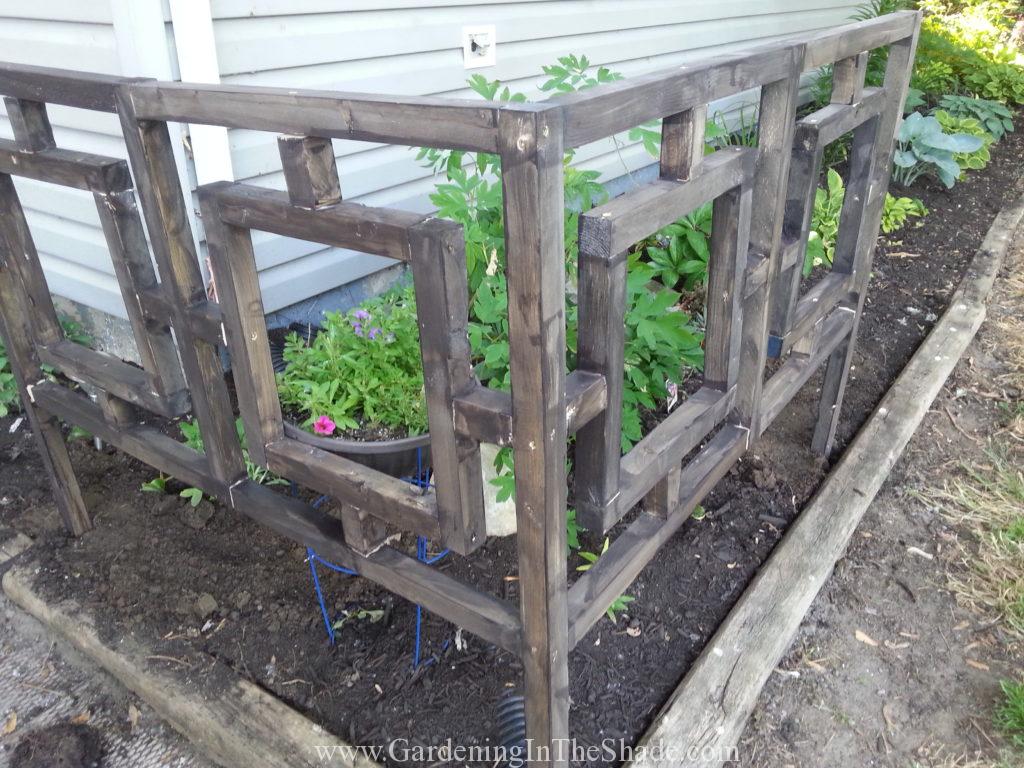
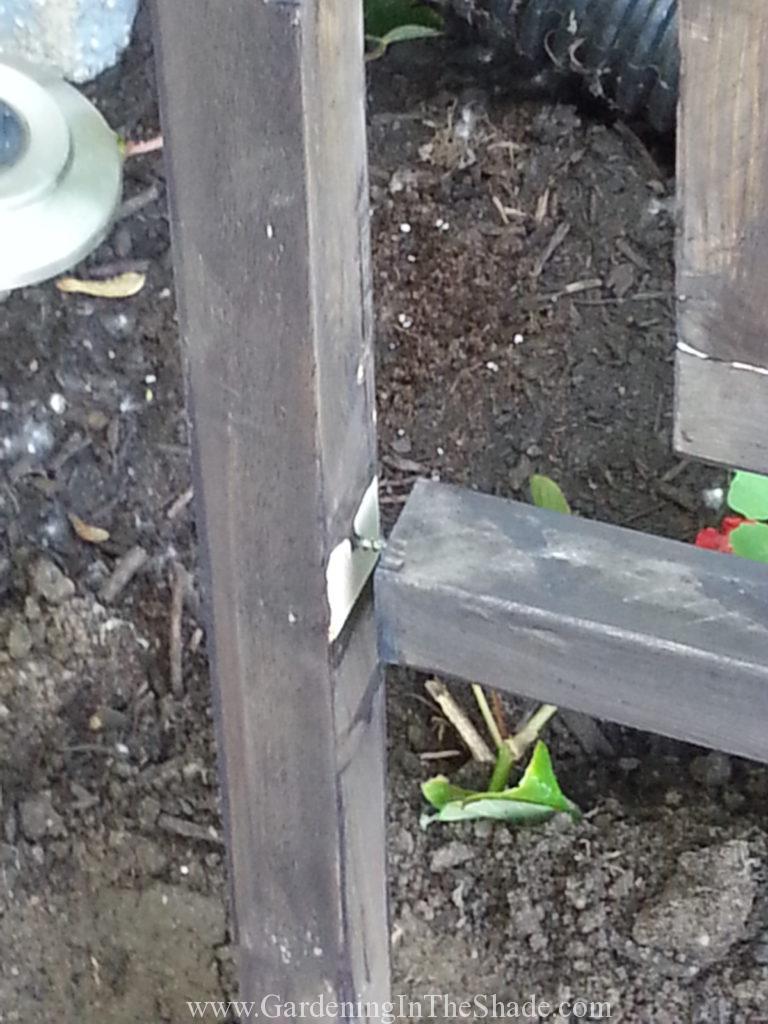
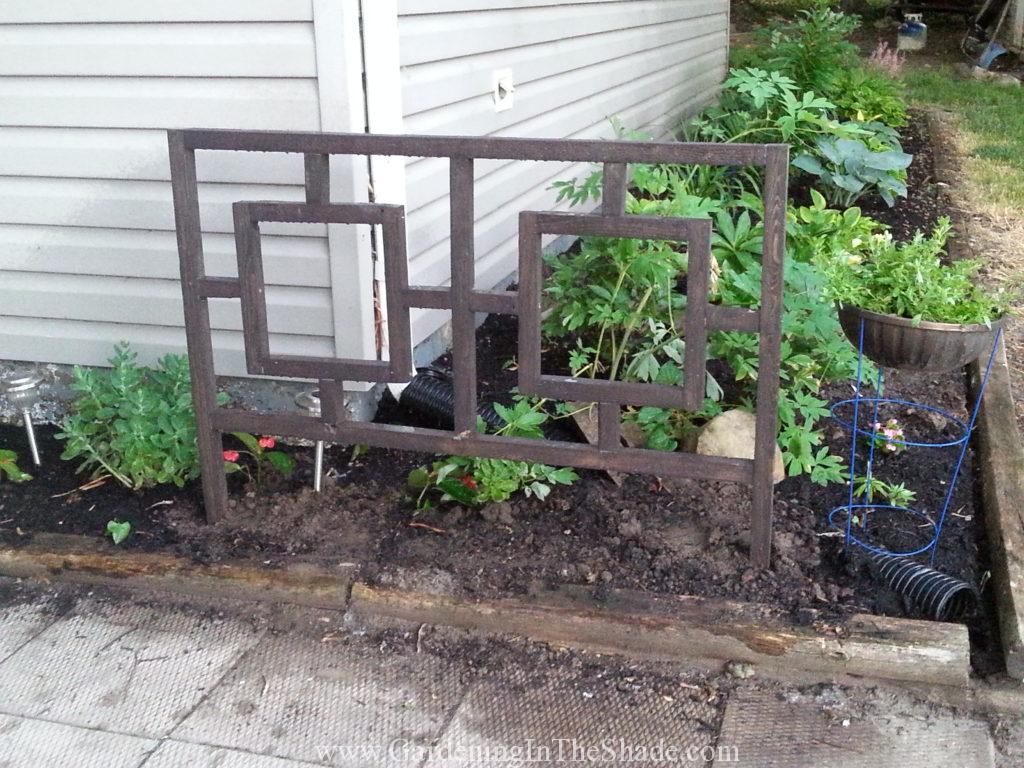
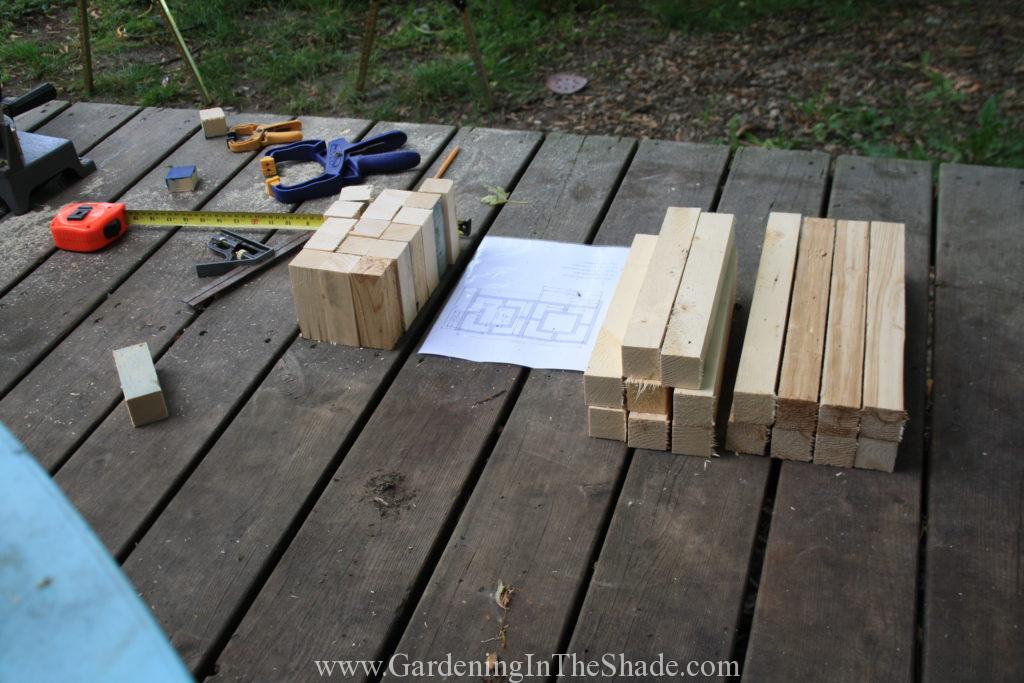
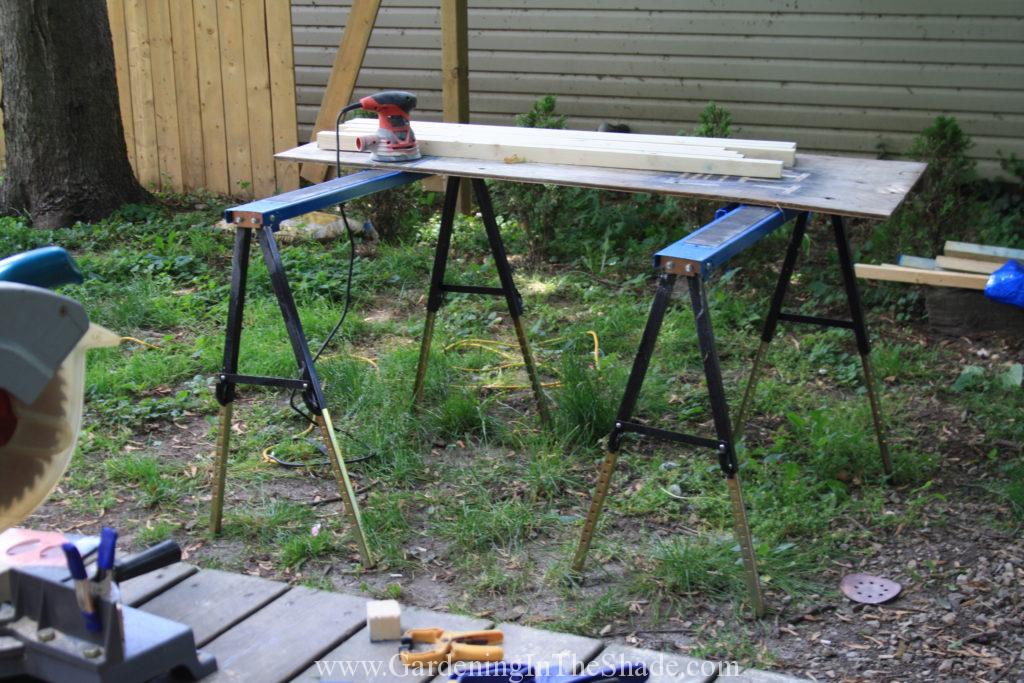
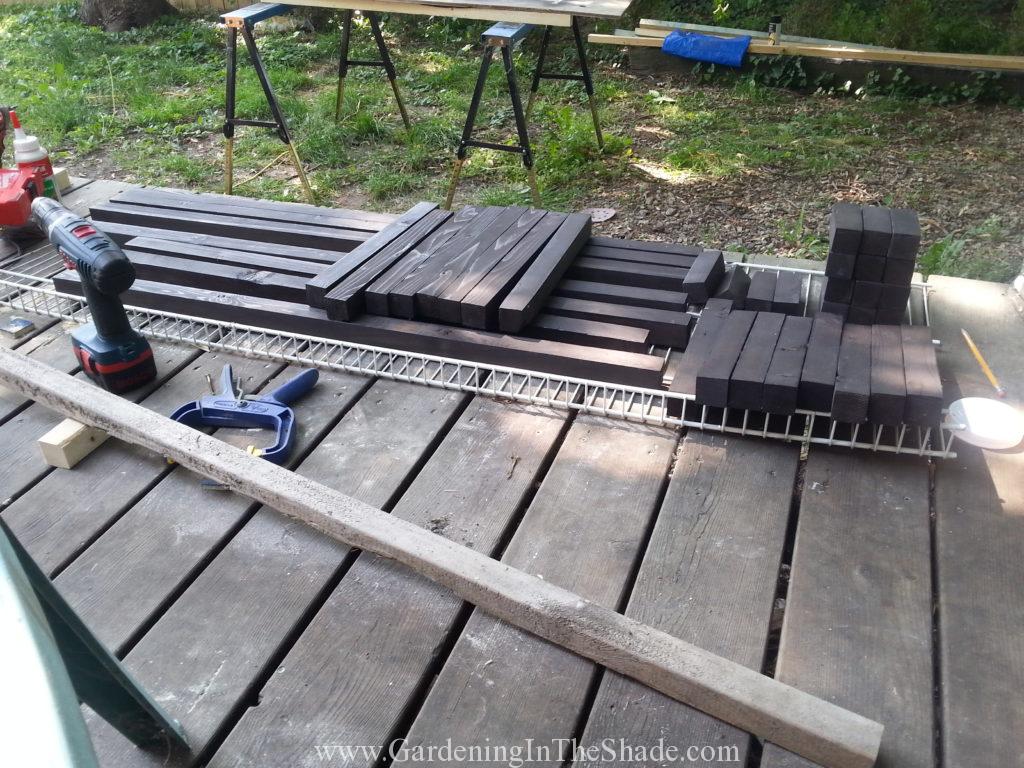
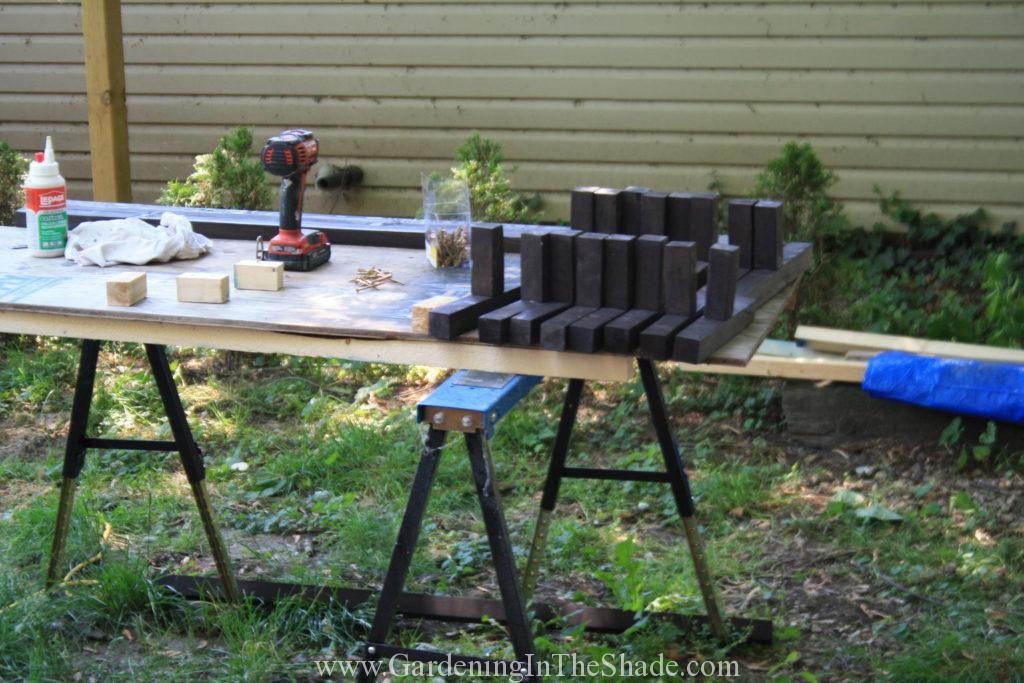
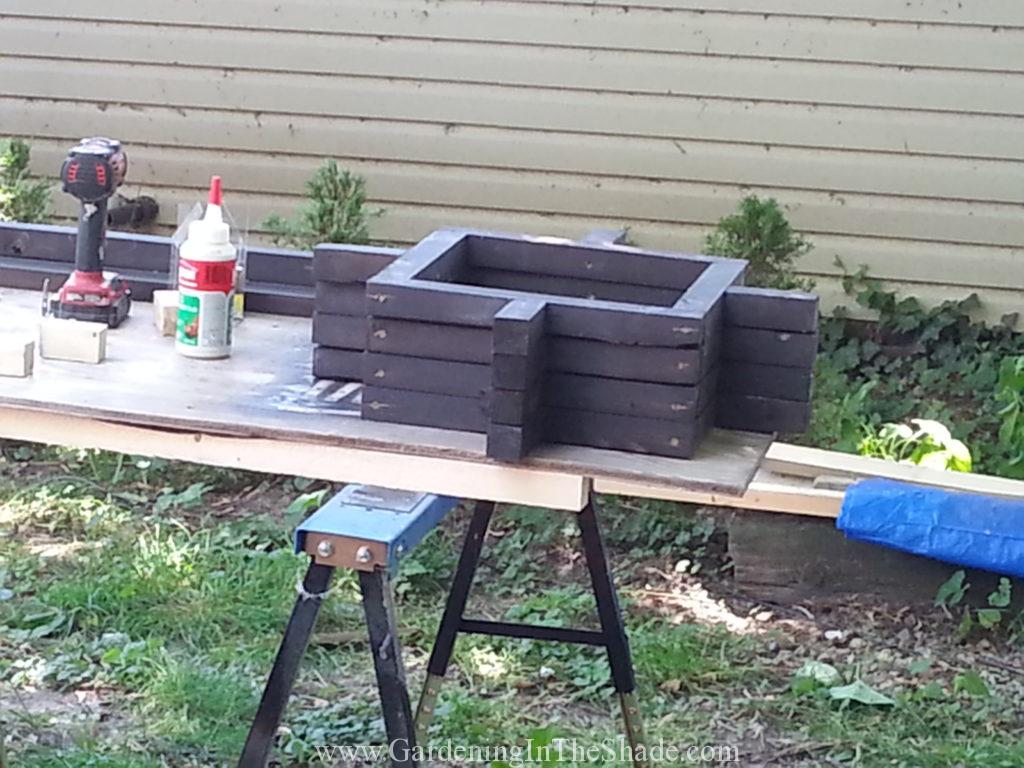
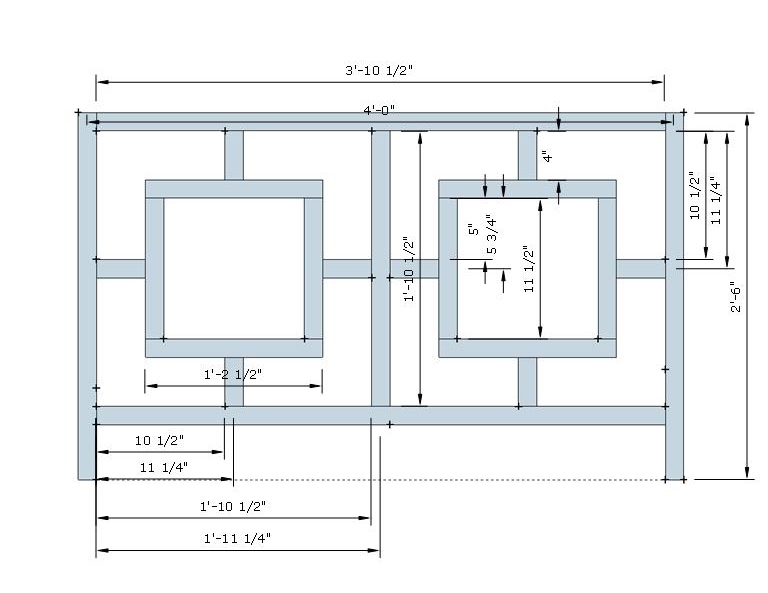
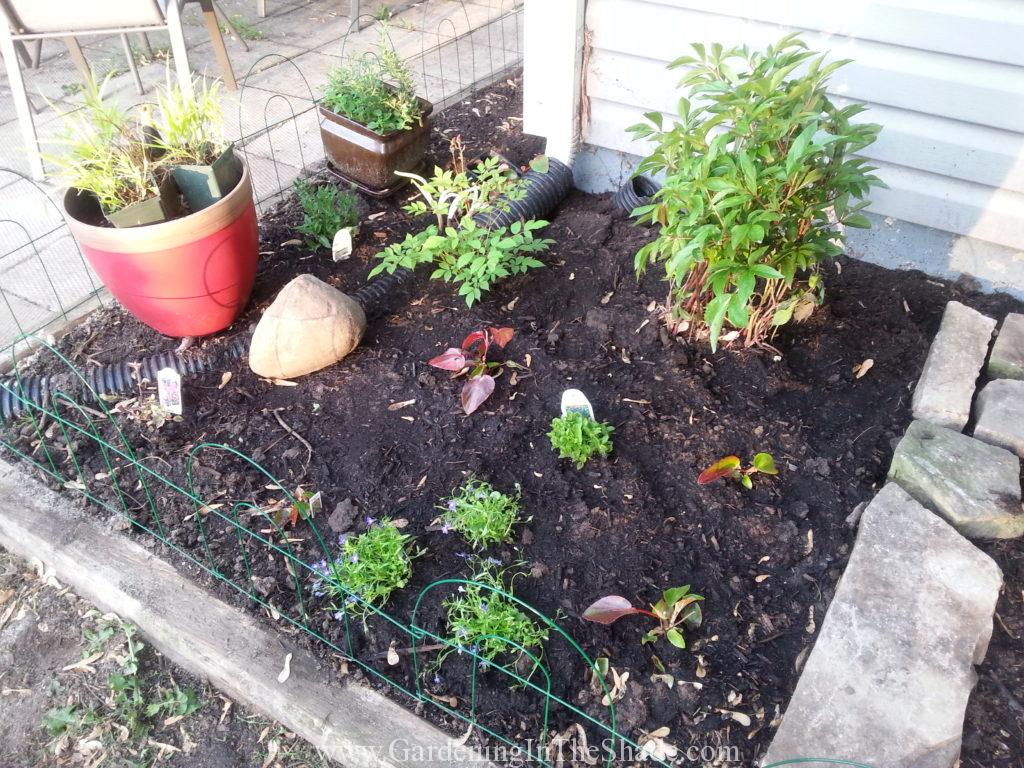
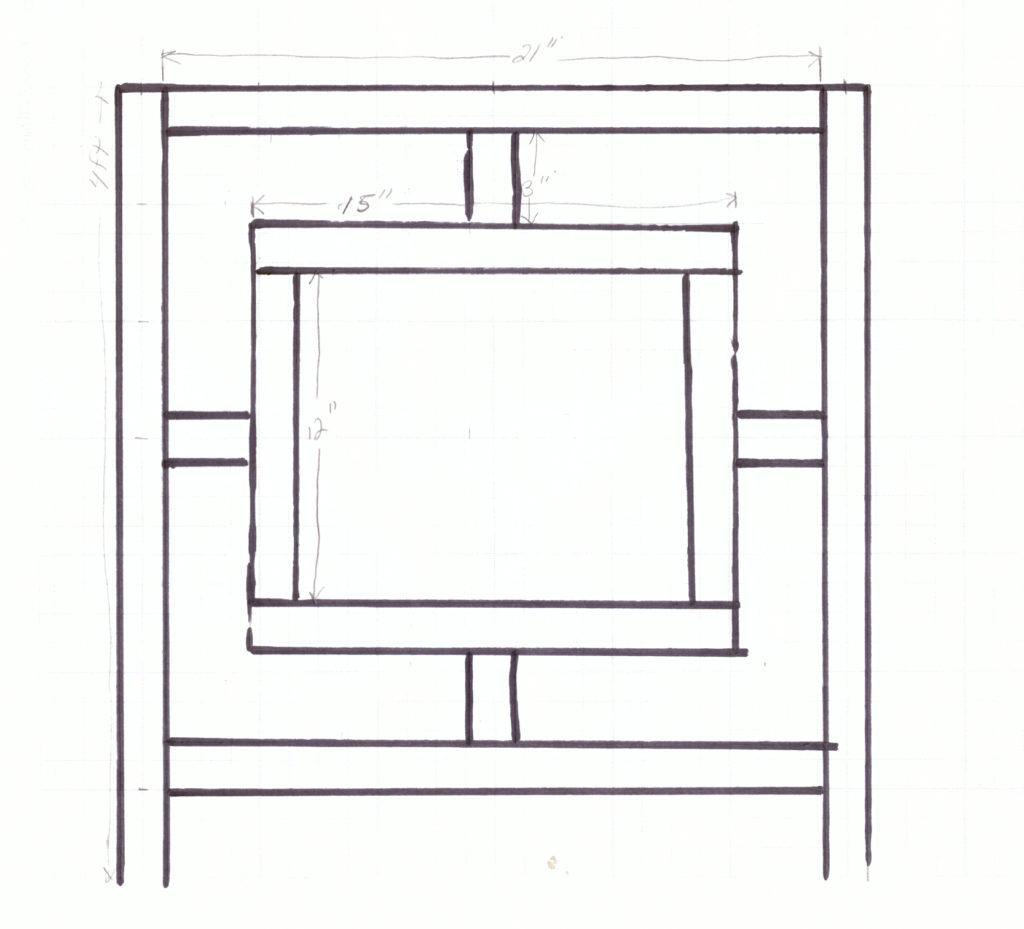 When I saw that folding screen I instantly visualized the look as fencing and worked up a rough plan based on 2 foot increments – one side of the bed is 24′ long, the other 26. Sketching up my own plans was probably my first mistake.
When I saw that folding screen I instantly visualized the look as fencing and worked up a rough plan based on 2 foot increments – one side of the bed is 24′ long, the other 26. Sketching up my own plans was probably my first mistake.